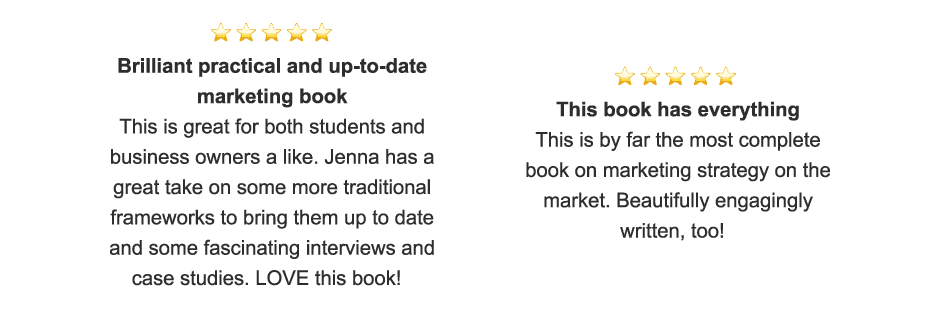This month, we’re going to be talking about marketing planning.
Isn’t ‘marketing planning’ the whole thing we do here at Let’sTalk Strategy? Isn’t a ‘marketing plan’ basically a strategy? Well, no.
A marketing plan is part of a strategy, but it’s not the whole thing.
A marketing plan – rather than being a road map – is an assessment of the terrain you’ll be covering
Tiffany, (2021)
Building on what we have discovered from the Scenario stage of STRATEGY is crucial to marketing planning. Rather than peering at the internal and external contexts of your organisation, marketing planning focuses on the wider market context.
Let’s take a look:
What is marketing planning?
Marketing planning is all about creating a blueprint for implementing your strategy. Marketing planning involves surveying the marketing terrain ahead and building a step-by-step plan for laying your strategy down on that terrain. A marketing plan pays close attention to solidly practical details, such as the resources needed for each stage of your strategy, and team member responsibilities.
Why is marketing planning important?
Here’s why marketing planning is crucial to a successful strategy:
- It provides a comprehensive and accessible structure for assessing marketplace dynamics.
- It gives all team members, including managers, a sense of direction and ownership of the plan.
- It identifies important areas of focus (and the resources those areas may need).
- It defines communication channels and protocols.
Most of all, a marketing plan clearly defines the role of each team member.
“Everyone in the organisation must be moving in the same direction and fulfilling the organisation’s vision. Your marketing plan will improve cross-team communication, and make sure that everyone knows what’s required of them to achieve the brand’s goals.”
(Tiffany, 2021).
How do you make a marketing plan?
Each marketing plan will be highly specific to the individual brand, team, campaign etc. That being said, all marketing plans will need to be aware of The 7Ps and The 4Cs.
The book ‘Marketing Strategy’ goes into a lot moredetail about the 7Ps and the 4Cs Here’s an overview.
The 7Ps
The 7Ps are also known as the marketing mix. The marketing mix is a set of controllable variables that brands can tweak and maneuver to both meet and influence the needs of consumers. It’s been around as a concept since the 1960s, when it comprised 4Ps – Product, Price, Place, and Promotion.

Since the 1960s, the marketing landscape has changed and grown, and the economy has become a lot more services-based. So, to accommodate those changes, there are now 7Ps: Product, Price, Place, Promotion, People, Process, and Physical Evidence.
Let’s take a look at the 7Ps, and how they can be adjusted to suit needs and trends:
Product
Your product is – well – your product. The focus for your marketing plan should be on creating a product that will satisfy (or even influence) the needs of your target consumers. When considering this first P, a model such asthe Augmented Product Model, created by Kotler and Armstrong in 2010 is a very useful tool in adding further depth and detail about your product.
Basically, this model breaks the product down into three levels:
- Core product. The basic benefits/purposes of the product. For example, the ‘core’ of a vacuum cleaner would be a machine that sucks up dust. Net benefit: a clean house.
- Actual product. This level focuses on the physicality of the product. At this stage, consider things like how the product looks, what it feels like to handle, the branding, the colour scheme, its lifespan, the materials it’s made of, and so on.
- Augmented product. This stage delves into the non-physical, non-basic elements of the product. Here, you look at the added-value elements that a customer might pay extra for. In our vacuum cleaner example, the Augmented elements could include things like free delivery, regular free servicing, a generous breakdown policy etc.
Also consider your product’s lifecycle. How long is it likely to last – both physically and in terms of trends? What can you do to keep your product relevant and needed?
Price
Price is one of the most important considerations for any customer when considering a purchase. So, you should think about your pricing strategy very carefully.
A lot of external factors act on the price you will need to set and what people will be willing to pay, including:
- Perceived quality. People will pay more for a higher quality product.
- Overhead costs. Manufacture, storage, shipping etc all cost money. While you can have ‘loss leader’ products that sell for less than their associated overheads, you should only use loss-leaders if they’re going to lead to sales that will cover your other costs.
- The going rate. If your product is priced much higher or much lower than the average going rate, you risk losing trade to competitors.
Remember also that there’s a big psychological factor at play with any pricing. For example, it may feel like reducing the price of a high-quality product will bring people flocking to purchase a bargain. And that may be somewhat the case if you hit the sweet ‘bargain’ spot.
But if you lower the price too far, people will wonder why. They’ll be suspicious that the product isn’t actually as high quality as you say (after all, how can you cover your costs if the price is this low?), and will go for a more expensive product on the assumption that it’s better quality.
Place
This is all about how and where your product is bought. Consider how your product gets from the production line to your customers.
Do you sell directly to consumers from your own brand? Or do you sell via intermediaries, such as agents, wholesalers, distributors, and retailers? Or perhaps a mixture?
The ‘place’ aspect of the marketing mix can have a big impact on ultimate sales. Ultimately, you want to make it as easy as possible for your customers to purchase your product. While selling directly may be easier for you, it’s not always easier for customers. So, consider which ‘places’ are most convenient for your customers.
Promotion
Promotion is all about how you advertise your product. Avenues of promotion tend to be divided into two categories:
- Above The Line (ATL). Mass media methods, including television advertising, leafleting, billboards, newspaper & magazine ads etc.
- Below The Line (BTL). These are more company-controlled and targeted. BTL methods include trade marketing, sampling, door-to-door sales, social media ads, email ads, PR, content marketing etc.
You’ll have considered a lot of the promotional aspects within the rest of your strategy so, at this stage, try and work out how and when you’ll deploy your chosen promotional materials, as well as the resources you’ll need to do so.
People
Your people are one of (if not the) most important resources available to you. Whether you’re marketing products or services, it’s crucial to consider the people involved in your process.
Think about:
- How approachable your people are.
- The skills your people have.
- The impression of your brand that your people give.
- The training your people may need to be the very best they can.
- How you can acquire people to fill skill gaps etc.
Process
This P is all about the systems and processes that bring your product/service to the consumer. For example, when considering this P you might assess:
- The process of making transactions on your website.
- How a customer reaches your buying page from an advert.
- How your customer support system works.
- How you respond to customer queries.
- How you manage queues etc during busy times at a bricks’n’mortar shop.
Ultimately, ‘Process’ is all about mapping the customer experience and identifying ways to improve it.
Physical evidence
Physical evidence is important for both product-based and service-based brands. For example, a cleaning company should consider things like the state of their uniforms and equipment, the branding of their vehicles etc under ‘physical evidence’. A more product-based industry should consider things like how their shops look and the physical state of their product for this P.
When considering the final P, the following are important:
- Environment. This can be digital or physical. What do your physical premises look like? Are they well-kept and in good condition? What about your website? Does it look good and work well?
- Ambience. How does your space feel? Does it smell nice? Are there jarring sounds (roadworks outside, for example)? Does your ambience match the product or service you’re aiming to provide?
- Layout. The spatial layout and/or web layout you use can have a big influence on purchasing behaviour. Think of IKEA, for example, which is deliberately designed to encourage customers to touch interesting items, and has a circular floor plan that draws customers further into the shop than they initially intended. You can’t just ‘nip in and out’ of IKEA – and it pays off for them.
- Signage. Signage doesn’t just include things like “Crockery here” and “50% off!” (although those are important!). It also includes things like nameplates for team members, how recognisable your branding is, and so on.
The 4C’s
The 4Cs are designed to tighten focus on the consumer. It’s all about drilling right down into the niche needs and features of the consumer, enabling a more detailed and strategic form of marketing.
Let’s take a closer look:
Customer
This C is fairly self-explanatory. The focus is on the customer, who they are, what they want, and how you can cater to their needs. This C should be considered in conjunction with the first P (Product).
Cost
This one should be considered along with the second P (Price). Where Price looks broadly at every aspect of a pricing strategy, ‘Cost’ drills down into the cost (both literal and psychological/emotional) for the consumer of buying your product.
For example, in addition to the money spent, the cost to the consumer also includes:
- The time spent browsing/purchasing.
- The cost to the conscience of buying a product that may not align entirely with the customer’s ethics.
- The cost to convenience of switching to your brand from another.
By considering every cost to the customer, you can figure out ways to remove blocks and add value that will encourage consumers to pick your product over others.
Communication
This C is all about the relationship between us as marketers and the consumers we’re trying to reach. At this point, consider how you open and sustain a dialogue with customers, how you nurture them, meet their needs, and nudge them towards conversion.
Remember, while conversion may be the ultimate goal, this C is all about building relationships – so don’t overfocus on conversion at this point.
Convenience
Convenience is a huge factor when it comes to purchasing decisions. That’s why Amazon is so popular – that 1-Click buy, delivered tomorrow thing is incredibly convenient. So much so that people are willing to overlook ethical qualms and even quality issues for the sake of that convenience.
So, think carefully about how convenient it is for customers to access your offering. Could you make it more convenient? If it’s not particularly convenient, how can you justify this? (For example, people may be prepared to suffer some inconvenience for a rare product that has to be handled carefully).
Use the marketing mix to build the perfect marketing plan
The marketing mix is as relevant today as it was in the 1960s – albeit with a few adjustments. It’s a great framework for marketing planning, and can be a huge help to the Awareness stage of your strategy.
To get the fuller picture, see the book Marketing Strategy by Jenna Tiffany.
Exclusive offer, 20% off!


